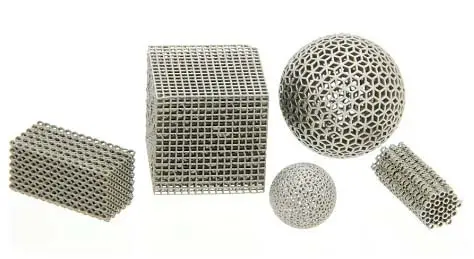3D Printing parts are common now, we can see many metal and plastic 3D printed parts frequently. For the surface treatment of 3D printed parts, do you know several methods? Here xielifeng tech will introduce you 6 common methods.
-
Sandpaper polishing
Sandpaper is the most common grinding tool. Water should be added before grinding to prevent the material from being too hot. Generally speaking, the table is usually (400/600/800/1000/1200/1500) the lower the label, the larger the sandpaper grain, the printing order starts from the lower label, but because the surface flatness of the printout is different, it is not Need to start in a completely fixed order. In addition, after spending 400, you can go directly to 800, mainly according to the actual situation at that time.
-
Acetone polishing
Acetone can also dissolve ABS material, so ASB models can be polished with acetone. Polishing is done mainly by fumigation of 3D printer-printed models with acetone vapor. PLA materials cannot be polished with acetone. Acetone is a hazardous chemical, and it is recommended to work in a well-ventilated environment and wear safety equipment such as a gas mask.
-
PLA polishing fluid
It is actually an acrylic adhesive diluted with water, and the main component is a mixed solvent, such as methyl chloride or methyl chloride. The operation steps are to put the grinding liquid into the operation bowl, hang the model support with wire or rope, and soak it in the bowl added with glazing liquid. The soaking time is too long, about 8 seconds is fine. Like acetone, PLA polish is advised to be used with caution as a toxic substance.
-
Surface sandblasting
This is also a very common polishing method that guarantees a smooth finish. The operator polishes the model with a nozzle, which uses compressed air as power. It has been sprayed onto the surface of the model to be processed by a high-speed jet to achieve polishing, and the jet is faster than grinding. Sandblasted surfaces can be used to achieve a smooth finish, no matter the size of the model.
-
Adhesive assembly
Large and multi-part or partially segmented models often require gluing. To complete the bonding, it is best to apply glue when sticking and fix it with a rubber band. It will be tighter when it is properly bonded. During the bonding process, if the model has gaps or rough contact parts, you can also use Bondo adhesive or filler to smooth it out.
-
Model painting
Painting method: The operation is relatively simple, and it is more suitable for small models or fine parts of models. In order to be able to spray the ideal effect, before finishing the paint, it is necessary to carry out trial spraying and inspection work, whether the concentration is appropriate, and reasonably prevent resource waste. Using the paint method, the paint can be spread evenly on the surface of the model, which greatly saves time. Hand paint method: it is more suitable for dealing with complex details. When painting, it is necessary to apply it back and forth 2 to 3 times. This softens the handwriting that occurs when hand-painting and achieves an even color. For a smoother, more even application of the paint, the same brand of solvent can be lowered and the dilution done in the palette.
What affects the strength of 3D printing parts
Briefly explain the two important points that affect the strength of 3D printing: The first is the process: light curing SLA, hot melt extrusion FDM, laser sintering SLS, laser melting SLM. The second is the material: the material corresponds to the process. Photosensitive resin, PLA/ABS, etc., nylon powder, metal powder. The strength of craftsmanship and materials increases from left to right.
3D printing materials with different characteristics can reflect different degrees of firmness. For example, materials such as metal materials, nylon materials, and carbon fiber materials can meet various requirements for high strength, wear resistance, high temperature resistance, and weather resistance. Requirements, even some materials are stronger than ordinary materials, and these materials can be subdivided into more materials for different industries. The second is the problem of model design. The design of the target model must also meet the requirements of physical characteristics in order to give full play to the advantages of the material. For example, if sufficient support bars are pre-designed in the right-angle part, then the least material can be used to achieve best results.

